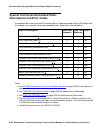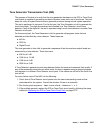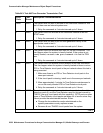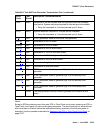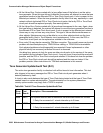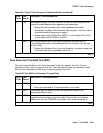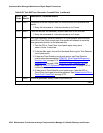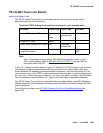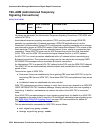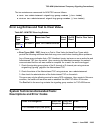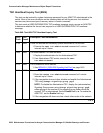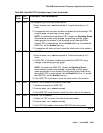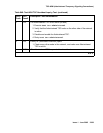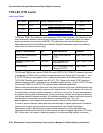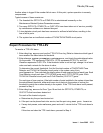
Communication Manager Maintenance-Object Repair Procedures
2364 Maintenance Procedures for Avaya Communication Manager 3.0, Media Gateways and Servers
TSC-ADM (Administered Temporary
Signaling Connections)
S8700 | 8710 / S8500
No alarms are generated for Administered Temporary Signaling Connections (TSC-ADM, also
called ADM TSCs).
Administered temporary signaling connections (TSC) provide a path through ISDN-PRI
networks for supplementary D-channel messages. ISDN-PRI applications such as the
Distributed Communications System (DCS) use temporary signaling connections to exchange
user information across an ISDN-PRI network. What makes Administered TSCs unique is that
these particular TSCs stay active for an extended period of time, similar to a permanent data
connection. These ADM TSCs are used for DCS features that require Non-Call Associated
(NCA) TSCs, and the ADM TSC provides the logical channel function in a DCS network.
An NCA TSC is a virtual connection established within a D channel without associating any
B-channel connections. The connection provides user-to-user service by exchanging USER
INFORMATION messages without associated B-channel connections.
An Administered TSC is a special NCA TSC defined for the DCS over the ISDN-PRI D channel.
The ADM TSC has an administratively defined endpoint and is established for an extended
period of time.
There are two types of ADM TSCs:
● Permanent: these are established by the originating PBX (near-end ADM TSC) or by the
terminating PBX (far-end ADM TSC). Once these ADM TSCs are established, they remain
active.
● As-Needed: these are established only when needed.
ADM TSC maintenance provides a strategy to verify that a far end can respond to an ISDN-PRI
USER INFORMATION TSC heartbeat message, thereby indicating that user-user signaling is
functioning. In addition, maintenance can retrieve the status of the ADM TSC’s connection
state.
Since ADM TSCs are administered on a per signaling-group basis, the health of an ADM TSC
also depends on the state of the D channel or D-channel pair administered per signaling group.
See ISDN-SGR (ISDN-PRI Signaling Group)
on page 1429 documentation for details on
ISDN-PRI NFAS and D-channel backup maintenance.
The two administration commands for ADM TSCs are as follows:
● add signaling-group number
● change signaling-group number
MO Name Alarm
Level
Initial Command
to Run
Full Name of MO
TSC-ADM none none Administered Temporary Signaling Connections



